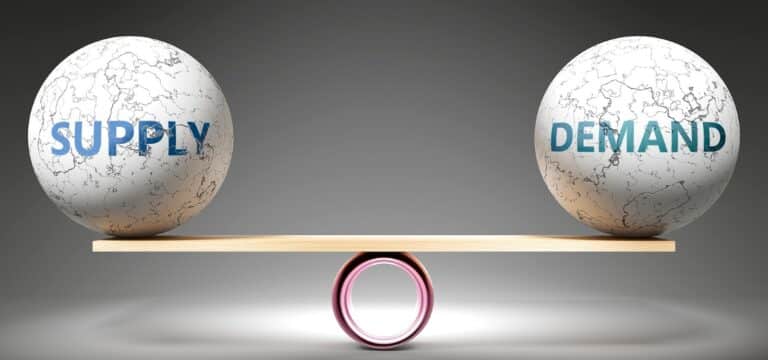A chain, or network, is a system that brings together players with different motivations. A supply chain comprises suppliers and customers. Both want to maximize their profits, which can be antagonistic – sellers and buyers negotiate this on a daily basis.
A company comprises a set of functions whose performance is measured on indicators that can also lead to antagonistic positions. Sales want to increase inventory, finance wants to reduce inventory, supply chain wants to reduce batch sizes, production wants to increase batch sizes, etc.
The challenge is to ensure that the overall supply chain efficiency is maintained, even though it is made up of heterogeneous links with often conflicting objectives and performance measures.
At the same time, all corporate functions and supply chain partners have a common interest: to grow by meeting the expectations of their markets. Trust is a key ingredient, both within the company and with business partners. The challenge is how to establish and maintain this supply chain trust.
Sharing Common Principles
The first priority for a supply chain leader is to ensure that all stakeholders understand and share common principles. We’re in the field of education. APICS, in its day, codified and disseminated the principles of S&OP / MPS / MRP in companies, playing a key role. Lean / Six Sigma has also contributed. The Toyota production system is a prime example of a set of shared principles. The Demand Driven Institute has brought a new wave of shared principles.
To succeed in building supply chain trust, you need to invest in training your teams. You also need to popularize and share these matters with your counterparts in other functions and use your influence with suppliers and customers. A variety of training, simulation, and gaming formats are available for this purpose.
Among the most important principles to share, of course, is that the most important thing is to establish a fast, reliable flow.
In addition to theoretical education, you need to bring these principles to life by example, in a concrete way, in the day-to-day life of the company, so that everyone lives in unison with what good practices are, and in which direction improvement is heading. Having worked in the industry for almost forty years, this is the most difficult but also the most rewarding part of the job!
Sharing Visibility
To build confidence, there’s nothing like visualizations based on company and supply chain partners data. It’s all about visualizing, as transparently and clearly as possible, the key information that will guide decisions: demand status, manufacturing progress, inventory health, status of in-transit flows, load/capacity for the coming weeks, and so on.
Business intelligence technologies have come a long way, so use them wisely to highlight useful information and support decision-making.
Sharing visibility isn’t just a question of data – management rituals, from S&OP to short-interval animation on the shop floor, via reviews with key suppliers and customers, also help maintain trust through verbal and informal communication. Provided you avoid these rituals becoming confrontational or lacking in reciprocal transparency, supply chain visibility can be enhanced.
What Does Supply Chain Technology Have to Offer?
Technology – as we’ve already mentioned in the case of business intelligence technologies – can help, but…
We all have many examples where technology has not given us confidence. Do planners have confidence in the results of ERP requirement calculations? Has EDI, which has been around for decades, given us confidence in the quality and stability of customer requirements? Do your suppliers believe the forecasts you share with them? Do you have confidence in the quality of your master data quality?
In fact, we often have more confidence in low-tech – for example, in our favorite Excel file – which we can more easily understand and master.
Obscure algorithms are not to be trusted. How can we explain the buzz around artificial intelligence in supply chain, when we witness its repeated hallucinations? Sorry to disappoint you, but artificial intelligence is not conducive to building trust.
For technology to foster trust, people need to understand and be able to validate the relevance of its recommendations. Visualizations are key, as is the ability to match recommendations to one’s intuition and business knowledge.
We try to follow these precepts in the development of Intuiflow, so that our platform promotes the establishment of supply chain trust from one end of the chain to the other!












